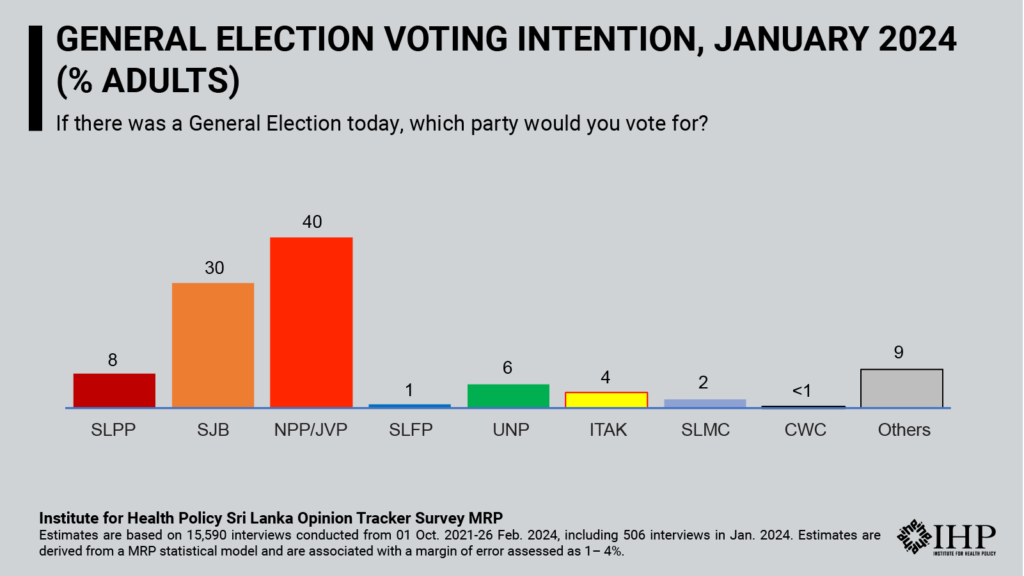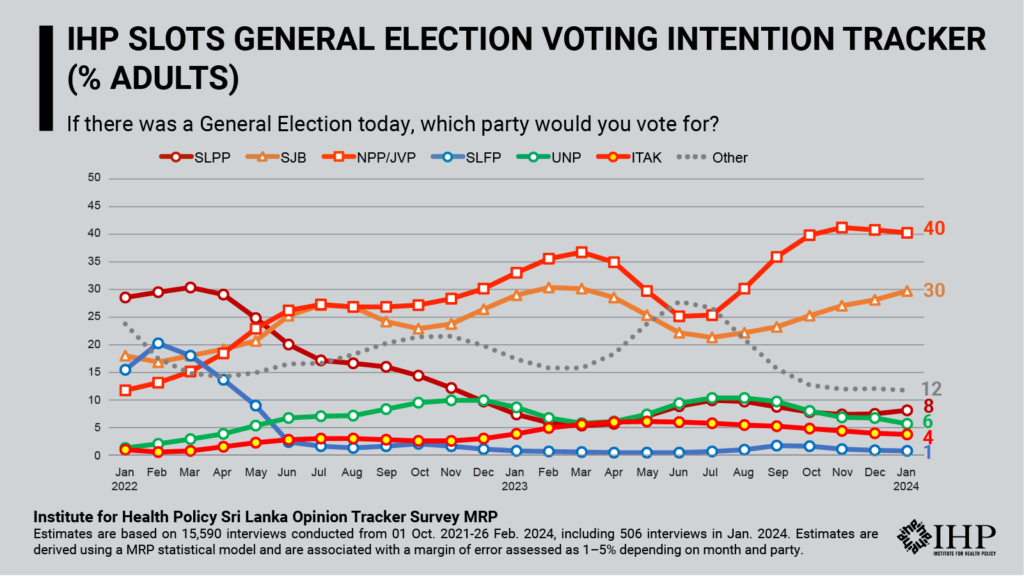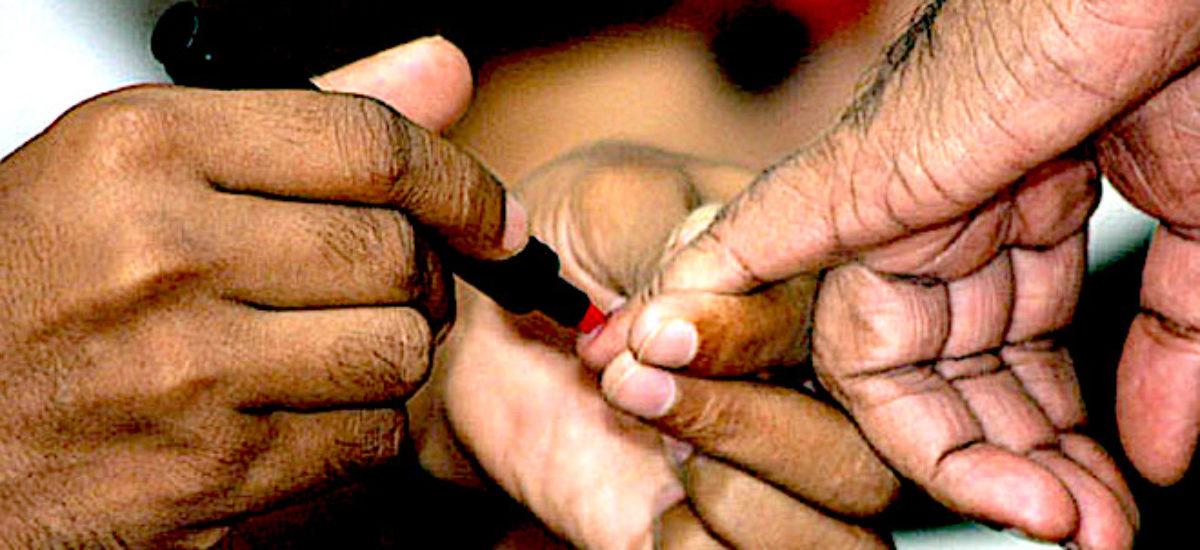Photo courtesy of LBO
The latest estimates from Institute for Health Policy’s (IHP) revised SLOTS MRP model show no substantial change in general election voting intentions in January 2024 compared to the previous month. NPP/JVP continues to maintain a lead with 40% of adult voters (-1 since previous month). The SJB leads the rest at 30% (+2), the SLPP at 8% (NC), the UNP at 6% (-1) and ITAK at 4% (NC). The January estimates are provisional and are associated with a margin of error of 1.0–3.6% for the four leading parties.


These estimates are based on the January 2024 revision of the IHP SLOTS Multilevel Regression and Poststratification (MRP) model, which smoothed monthly changes and reduced monthly fluctuations due to sampling noise. Unlike previous months, which highlighted voting intent in likely voters, these estimates are for all adults. It should be noted that differences in voting intent shares between all adults and likely voters have typically been 1–2% for most estimates in the past two years.
The January 2024 update is based on 15,590 interviews conducted with adults across Sri Lanka since October 2021, with 506 interviews carried out in January 2024.
Methodology details
SLOTS combines interviews from a national sample of adults (ages 18 and over) reached by random digit dialling of mobile numbers and others coming from a national panel of respondents who were previously recruited through random selection and face to face interviews. IHP estimates voting intent using an adaptation of Multilevel Regression and Post- Stratification (MRP), with multiple imputations to account for uncertainties in its modelling, exploiting data from all SLOTS interviews to estimate voting in a particular month.
The January 2024 MRP estimates are based on 506 interviews conducted in January 2024, and 15,590 interviews conducted overall from 1 October 2021–26 February 2024 with a margin of error assessed as 0.4–1.4% for the UNP, SLPP, SLFP, ITAK, SLMC, CWC and 2.6–3.6% for NPP/JVP, SJB and the other parties.
MRP is a method that is increasingly used by polling firms in other countries to leverage small samples, most notably by YouGov which used it to forecast results of the UK Brexit Referendum and recent UK general elections. All estimates are adjusted to ensure the sample matches the national population with respect to age, sex, ethnicity, socioeconomic status, education, geographical location and voting in the 2019 presidential and 2020 general elections.

